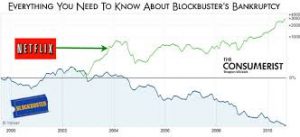Market applications
| Group activity: Market Applications Assignment, December 2022 and complete this Market Applications Form |
| Instructor resource: Market Applications Solutions, December 2022 |
This topic is all about how market exchange generates prices, which can be used for information purposes. My favourite examples of using price data to tell a story are the two charts below:
Recommended listening:
- Special Episode 12: Jen Dirmeyer – What Do Markets Do For Us? The Curious Task, July 27th 2022 – Jen Dirmeyer talks about the marvel of market order, with a particular focus on the incredible coordination that takes place to deliver consumer goods in contemporary society. She points out that supply curves reflect the best alternative use of resources and demand curves reflect the best alternative way of satisfying consumer needs, and in doing so rest on the same underlying logic. Also, I really liked Jen’s emphasis on an important downside of the reliance on market exchange – people with higher incomes, or higher budgets, are at a significant advantage over those less fortunate. This is indeed a social problem but the choice between economic systems is a choice between one that emphasises economic power versys one that emphasises political power. And the former may well be more egalitarian overall. Because economic wealth creation is positive sum, and therefore one person’s advantage need not come at the expense of another’s.
- “Ep. 39: Mike Munger — Is Price Gouging Wrong?”, The Curious Task, April 29th 2020 – Mike Munger is an excellent communicator of economic ideas and I highly recommend listening to this entire interview. But what I particularly liked were the following points:
- Markets are systems for coordinating diverse plans and preferences
- Markets provide a decentralised response that is locally tailored
- Any agreement on price requires a disagreement about value
- Prices provide a signal about how much other people value something, and you don’t even need to know who those people are. You only need to know the price.
- Prices are information that come from everywhere: we don’t know the source and we don’t know what it contains.
- Markets are a decentralised mechanism for communicating how much other people value something.
- The problem is scarcity. And the only options are price rationing or non-price rationing.
Price gouging
When economists defend the market response of higher prices during natural disasters (i.e. price gouging), we are not defending all types of price gouging. Consider the following:
- Price hikes – if someone raises the price of a good or a service after having made an agreement, this is fraudulent and clearly wrong.
- Licenses or patents – if a company receives monopoly protection for a specific product, and then raises the price, this is a reflection of artificial scarcity and not real resource scarcity. One form of this is cronyism, which is where companies are able to charge prices that exceed costs due to their political connections. This type of price gouging is because of artificial restrictions created by government interventions, and should be solved by creating a competitive market.
- A market response due to increased scarcity – this is what economists defend!
For more on price gouging, see this video by Mike Munger:
Also his famous essay:
- Munger, M., 2007, “They Clapped: Can Price-Gouging Laws Prohibit Scarcity?” EconLib, January 8th 2007

